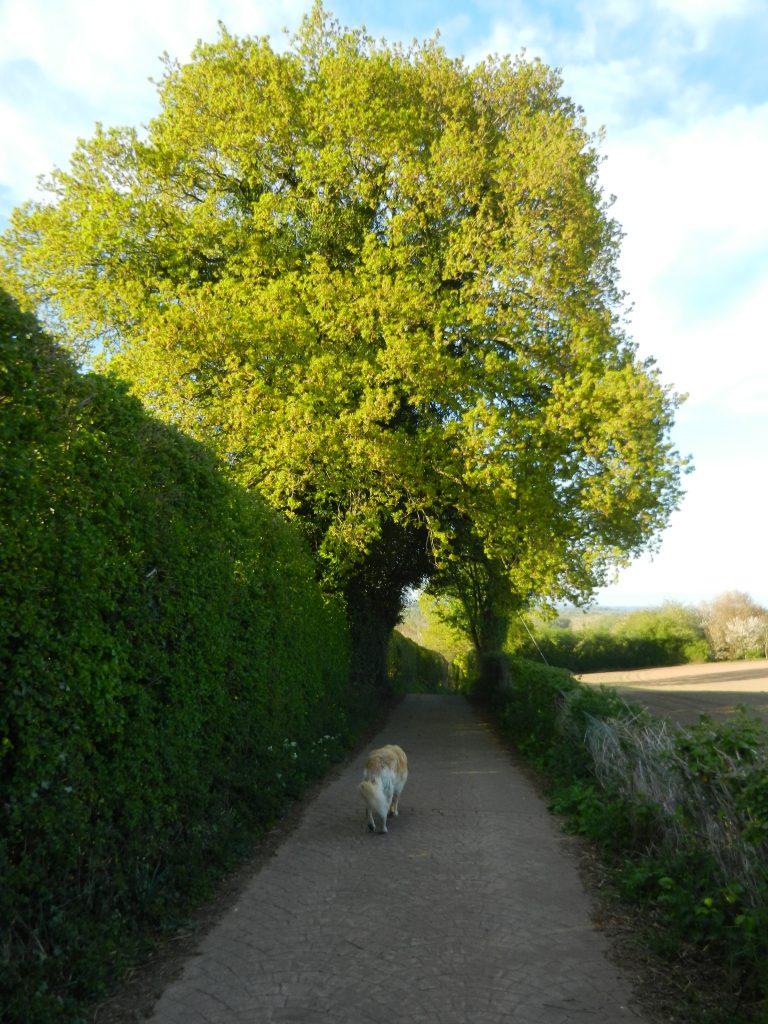
(I still don’t understand why some pictures come up sideways when they are the right way up on the desktop), anyway another photo of the lane from Hallow to the bank of the River Severn at Camp House (s.p.b.s). So why a young mature oak tree? – simply because they are now uncommon in eastern England and not particularly common in the west. There are, it seems, hundreds of species of oak native to the northern hemisphere (are there oak trees in the southern hemisphere?), many native to lower latitudes/warmer climates.
One fine example locally is in the disused cemetery on the north side of Sculcoates Lane, Hull which is very wide-spreading and therefore must be a pedunculate oak. As oak trees can live for well over half a millenium the one in Hull must surely predate the cemetery which was first laid-out in the 1870s. I would guess the one above to be 150-200 years old.
Walking under the above tree and looking up it was clear that oaks are characterised by a dense network of branches, offshoot branches and twigs, this and their longevity explaining why each tree can support such a wide diversity of fauna.
Throughout the middle ages there are many state paper archives referencing when the monarch donated ‘oaks’ from the royal (hunting) forests for high status building projects such as cathedrals. The wood was often used in the construction of roofs above the vaults or in strenthening a tower and/or spire out of sight to visitors, although could also have been used for visble fittings such as rood screens, misericords and bishop’s chair in the quire etc. Will soon get on to the cathedral.